The 1990s represented a fascinating transitional period for American automakers. As the boxy designs of the 1980s evolved into more aerodynamic shapes, and as reliability and technology improved, many American cars from this era established reputations for durability that have allowed them to remain on roads decades later.
These vehicles weren’t necessarily designed with 30+ years of service in mind, yet their combination of simple mechanics, parts availability, and sturdy construction has made them enduring classics.
Today, while most vehicles from the 90s have long since been retired to junkyards, certain models maintain a devoted following of owners who continue to use them for everyday transportation.
These survivors represent more than just transportation, they’re rolling time capsules of American automotive history, showcasing the engineering philosophies and design languages of a pivotal decade.
From workhorses like the Ford F-150 to the utilitarian Jeep Cherokee, these vehicles continue to serve their owners faithfully, demonstrating that sometimes the best features in a daily driver are simplicity, repairability, and time-tested reliability.
Let’s explore twelve American cars from the 1990s that have defied the odds and continue to serve as dependable daily transportation decades after they first rolled off assembly lines.
1. Jeep Cherokee XJ (1990-2001)
The Jeep Cherokee XJ remains one of the most influential and enduring vehicles of its era, creating the blueprint for the modern SUV while retaining a rugged simplicity that keeps it relevant as a daily driver decades later.
With its unmistakable boxy profile, the XJ Cherokee represented a perfect balance of on-road comfort and off-road capability that many modern crossovers still struggle to achieve.
At the heart of the Cherokee’s longevity is its legendary 4.0-liter inline-six engine. This powerplant, producing a modest but reliable 190 horsepower and 225 lb-ft of torque, is renowned for easily surpassing 300,000 miles with basic maintenance.
The engine’s low-end torque and straightforward design make it both capable and repairable, with many owners performing their maintenance with basic tools.
The Cherokee’s unit-body construction was revolutionary at the time, offering better ride quality than truck-based competitors while maintaining structural integrity that holds up decades later.
The XJ’s enduring appeal also stems from its practical dimensions. Unlike modern SUVs that have grown increasingly bulky, the Cherokee’s compact footprint (just 168 inches long) makes it maneuverable in urban environments while still offering generous interior space.
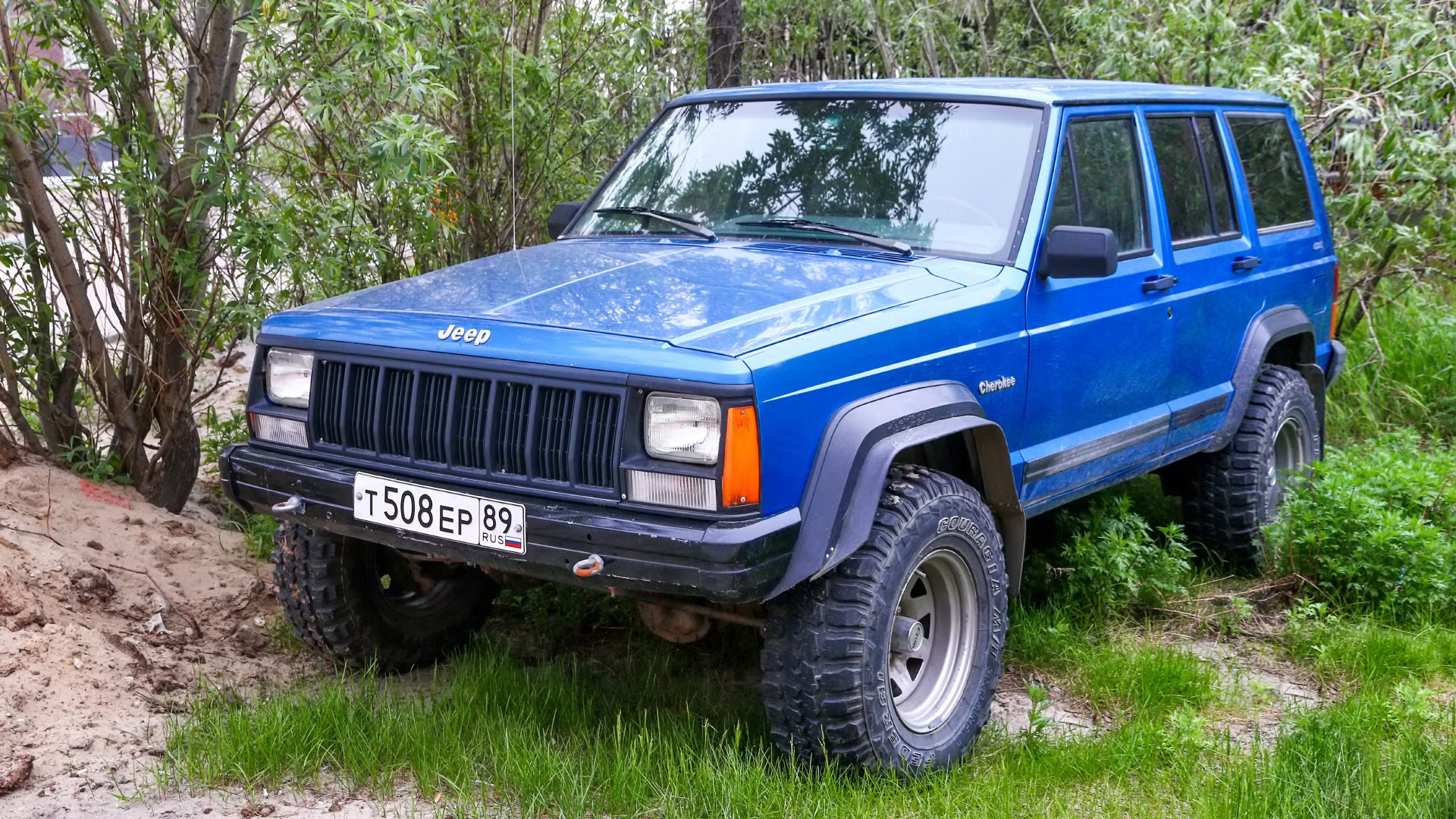
The upright seating position and excellent visibility features often sacrificed in contemporary vehicles make it particularly comfortable for daily commuting.
Today’s Cherokee owners cite the vehicle’s community support as a major factor in keeping these vehicles on the road. With abundant aftermarket parts, active online forums, and enthusiast groups sharing maintenance tips, even aging Cherokees can be kept running indefinitely.
The simple mechanical systems lack the complex electronics that often render newer vehicles unfixable when they fail. What’s particularly remarkable about the Cherokee’s continued use as a daily driver is its versatility.
From stock examples serving as reliable commuters to modified versions tackling serious off-road duty on weekends, the XJ platform continues to demonstrate its adaptability nearly four decades after its introduction.
While fuel economy (typically around 15-18 mpg) remains a weakness, many owners consider this a worthwhile trade-off for the vehicle’s durability and character.
2. Ford Crown Victoria (1992-2001)
The Ford Crown Victoria stands as perhaps the quintessential American sedan of the 1990s, a vehicle so durable and dependable that it became the backbone of police departments, taxi fleets, and government agencies across the nation.
Today, these full-sized sedans still roam American roads as daily drivers, their distinctive silhouettes immediately recognizable to anyone familiar with American cars of the era.
The Crown Victoria’s longevity stems from its purpose-built durability. Based on Ford’s Panther platform, these large rear-wheel drive sedans feature body-on-frame construction a design largely abandoned in modern cars but one that offers exceptional longevity and repairability.
Powering these massive four-doors is Ford’s modular 4.6-liter V8, an engine renowned for routinely exceeding 300,000 miles with basic maintenance.
While not particularly powerful by modern standards (producing 190-210 horsepower depending on the year), the engine delivers smooth, effortless torque that makes daily driving a relaxed affair.
Crown Victoria owners often cite the car’s tank-like build quality as a primary reason for keeping these vehicles in service. The simple mechanical systems are largely devoid of complex electronics, making repairs straightforward even for amateur mechanics.
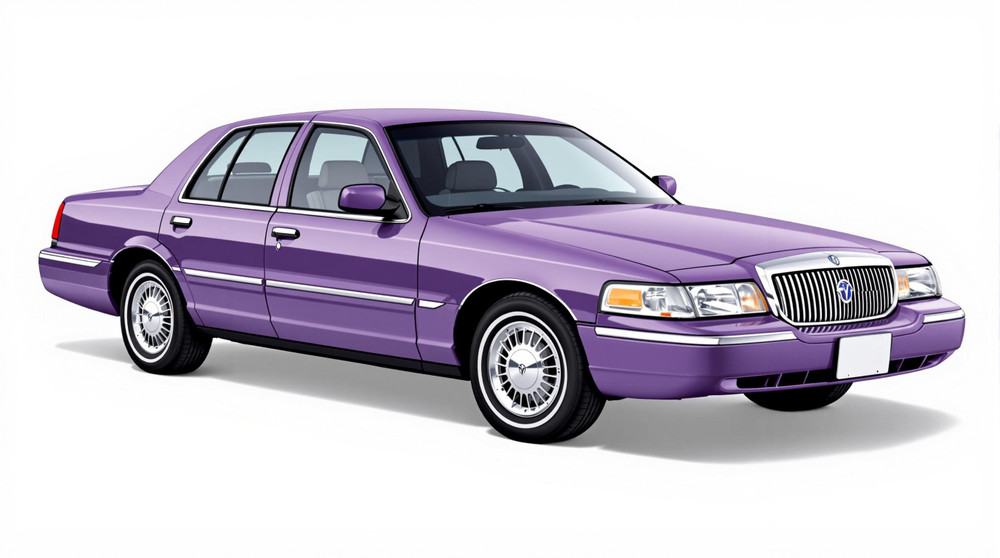
Parts availability remains excellent, with interchangeability across police, taxi, and civilian models ensuring continued support decades after production. The spacious trunk and six-passenger seating capacity offer a practicality that many modern vehicles can’t match.
The “Crown Vic” gained particularly devoted followers after Ford discontinued the model, with many owners specifically seeking out low-mileage former police interceptors.
These P71 models feature upgraded cooling systems, reinforced frames, and heavy-duty components designed for the rigors of law enforcement use attributes that translate perfectly to long-term daily driving reliability.
Perhaps most remarkably, the Crown Victoria achieves reasonable fuel economy considering its size and weight. Highway mileage in the mid-20s mpg range makes these cars surprisingly economical to operate despite their V8 engines.
The combination of a smooth ride, simple mechanics, and sturdy construction has made these vehicles particularly popular among older drivers seeking transportation free from the complexities of modern automotive technology.
While the Crown Victoria may lack the advanced safety features and technological amenities of contemporary vehicles, its fundamental design virtues, durability, simplicity, and comfort ensure that these distinctive American sedans will continue serving as daily transportation for enthusiasts and pragmatists alike well into the future.
3. Ford F-150 (1992-1996)
The ninth-generation Ford F-150, produced from 1992 to 1996, represents one of the most enduring iterations of America’s perennial bestselling vehicle.
These trucks, part of the OBS (Old Body Style) F-series family, continue to serve as daily drivers across America, their distinctive squared-off styling and mechanical simplicity helping them outlast many vehicles manufactured decades later.
The ninth-generation F-150’s longevity can be largely attributed to its powertrain options. The inline-six 4.9-liter (300 cubic inches) engine, in particular, has achieved legendary status for reliability, with many examples exceeding 300,000 miles with minimal issues.
This engine’s low-stress design, with torque-focused performance rather than high horsepower, contributes significantly to its durability. The available 5.0 and 5.8-liter V8 engines offer more power while maintaining similar reliability credentials.
Paired with simple four-speed automatic or five-speed manual transmissions, these trucks feature drivetrain components designed with significant mechanical safety margins.
Body durability represents another key factor in these trucks’ continued service. Ford’s extensive use of galvanized metal in this generation significantly improved rust resistance compared to earlier models, while the straightforward body-on-frame construction allows for easy repairs when needed.
The interior materials, though not luxurious by modern standards, were selected for longevity rather than initial appearance, with cloth and vinyl surfaces that resist wear remarkably well.
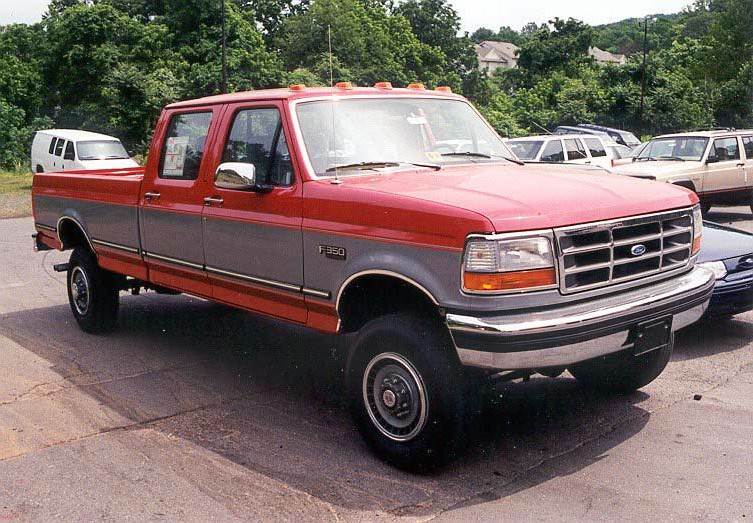
For owners, the ninth-generation F-150’s continued viability as a daily driver stems from its perfect balance of utility and manageability. Unlike modern full-size trucks that have grown substantially in every dimension, these F-150s maintain reasonable proportions that work well in urban environments.
The excellent visibility from the upright cabin, a feature increasingly sacrificed in contemporary vehicles, makes these trucks particularly easy to place in traffic or parking situations. The mechanical simplicity of these trucks continues to attract practical-minded owners.
Basic maintenance requires only standard tools and moderate mechanical knowledge, with routine procedures accessible to DIY enthusiasts. The trucks’ design philosophy emphasized serviceability; components were arranged with access in mind, unlike many modern vehicles where repairs often require extensive disassembly procedures.
Perhaps most importantly, these F-150s represent the last generation before pickup trucks began their transformation into luxury vehicles. Their functional interiors, durable powertrains, and honest utility continue to serve owners who view trucks as tools rather than status symbols.
While lacking modern safety features and achieving only modest fuel economy (typically 14-18 mpg), their fundamental reliability ensures that these distinctive Ford pickups will remain fixtures on American roads for years to come.
4. Chevrolet/GMC C/K 1500 (1990-1998)
The fourth-generation Chevrolet and GMC C/K pickup trucks, often referred to by enthusiasts as “OBS” (Old Body Style) trucks, represent one of General Motors’ most successful vehicle platforms ever produced.
These full-size trucks, manufactured from 1988 through 1998 and sold as 1990-1998 models, continue to serve as daily drivers across America decades after production, their distinctive square-bodied styling instantly recognizable on roads nationwide.
Central to these trucks’ remarkable longevity is their powertrain options, particularly the 5.7-liter small-block V8 (the legendary “350” engine). This powerplant, with its cast-iron simplicity and overbuilt design, routinely achieves mileages exceeding 250,000 miles with basic maintenance.
The 4.3-liter V6, essentially a V8 with two cylinders removed, shares much of this durability while offering improved fuel economy. These engines are paired with equally robust transmissions, typically the 700R4/4L60E automatic or five-speed manual, that were designed with significant mechanical safety margins.
The GMT400 platform that underpins these trucks introduced several innovations that contributed to their long-term durability. The chassis featured an independent front suspension system that drastically improved ride quality compared to previous generations while maintaining the strength necessary for truck duties.
The body structure incorporated extensive galvanized steel panels and improved sealing that significantly enhanced corrosion resistance, allowing many examples to survive in remarkably good condition even in harsh northern climates.
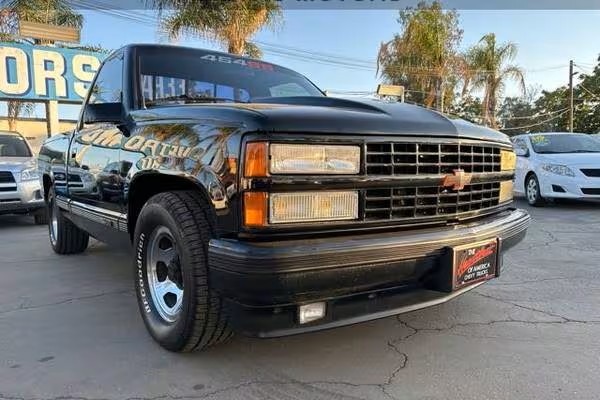
For owners continuing to use these trucks daily, their appeal lies partly in their perfect balance of utility and efficiency. The cabins offer excellent visibility thanks to large glass areas and thin pillars features increasingly absent in modern trucks.
The interior ergonomics, with straightforward controls and comfortable seating positions, reflect a design philosophy focused on function rather than excessive features. Maintenance remains straightforward, with excellent parts availability through both dealerships and aftermarket suppliers.
The digital afterlife of these trucks has further extended their service lives. Active online communities share maintenance tips, troubleshooting advice, and restoration guidance, enabling owners to keep their vehicles running indefinitely.
Nearly every component remains available either new or remanufactured, and the interchangeability of parts across multiple model years creates an enormous pool of potential replacement components.
While these C/K trucks lack modern safety features and achieve only moderate fuel economy (typically 14-18 mpg depending on configuration), their fundamental ruggedness, straightforward design, and continued parts support make them ideal candidates for extended service.
Their continued presence on American roads speaks to General Motors’ engineering excellence during this period and the enduring appeal of vehicles designed with long-term durability as a primary consideration rather than planned obsolescence.
Also Read: 10 Cars That Last Through Years of Rideshare Driving
5. Buick Roadmaster (1991-1996)
The Buick Roadmaster stands as one of the last true traditional American full-size cars, a magnificent anachronism that continues to serve devoted owners as daily transportation nearly three decades after production ended.
Built on General Motors’ B-body platform from 1991 to 1996, these imposing wagons and sedans represent the culmination of nearly a century of American automotive design philosophy, emphasizing space, comfort, and relaxed power above all else.
At the heart of the Roadmaster’s longevity is its exceptional drivetrain. Most examples feature the legendary LT1 5.7-liter V8 engine (from 1994-1996), shared with the contemporary Corvette but detuned slightly to 260 horsepower and 330 lb-ft of torque.
This robust powerplant, combined with the sturdy 4L60E automatic transmission, creates a mechanical package capable of extraordinary service life, with many examples exceeding 300,000 miles with routine maintenance. The body-on-frame construction provides both durability and repairability uncommon in modern unibody vehicles.
The Roadmaster’s interior dimensions seem almost impossible by contemporary standards. The wagon variant offers cavernous cargo capacity, with 42 cubic feet behind the second row and nearly 80 cubic feet with seats folded figures that rival many modern SUVs.
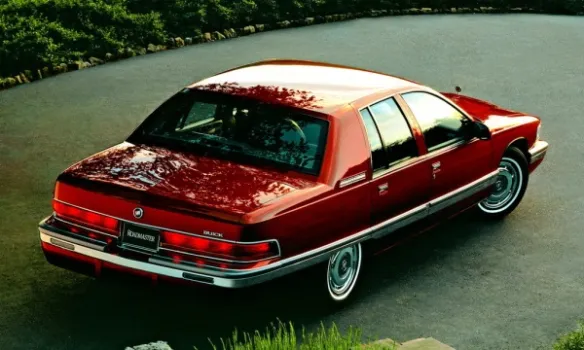
The sedan’s trunk similarly dwarfs those of contemporary vehicles. Both feature a six-passenger seating capacity with front and rear bench seats, making them uniquely practical for larger families still relying on these vehicles decades later.
For daily driving, the Roadmaster offers several advantages that keep owners committed to these machines. The soft suspension and substantial sound insulation create a serene driving experience, unlike most modern vehicles.
The commanding driving position and excellent visibility through large glass areas make urban navigation surprisingly manageable despite the vehicle’s substantial dimensions.
During highway cruising, the combination of the torquey V8 and tall final drive ratio allows these large vehicles to achieve respectable fuel economy, with many owners reporting highway figures above 25 mpg, comparable to much smaller modern vehicles.
Maintenance remains straightforward thanks to the conventional front-engine, rear-wheel-drive layout and mechanical simplicity. Parts availability benefits from extensive component sharing across GM’s B-body platform, which included the Chevrolet Caprice and Cadillac Fleetwood.
A vibrant online community provides support and expertise for owners maintaining these vehicles decades after production. While lacking modern safety features like side airbags and electronic stability control, the Roadmaster’s substantial mass and robust structure provide passive protection that helps explain why many families continue to use them as daily transportation.
Their combination of space, comfort, and mechanical durability makes these distinctive American luxury cars uniquely qualified for extended service lives well beyond what their designers likely anticipated.
6. Ford Explorer (1991-2001)
The first and second-generation Ford Explorer, produced from 1991 through 2001, helped define the modern SUV segment and continues to serve as a daily driver for thousands of Americans decades after production.
These versatile vehicles arrived just as consumer preferences began shifting away from traditional station wagons toward more rugged, capable family transportation, establishing a blueprint that would reshape the American automotive world.
The Explorer’s continued presence on American roads can be attributed largely to its robust mechanical underpinnings. The first generation (1991-1994) and second generation (1995-2001) featured body-on-frame construction derived from Ford’s compact truck platform, providing durability uncommon in modern unibody crossovers.
The available powertrains, particularly the 4.0-liter “Cologne” V6 and later the 5.0-liter V,8 were engineered with significant mechanical margins, allowing many examples to exceed 250,000 miles with basic maintenance. The simplicity of these engines, with overhead valve designs and relatively modest output for their displacement, contributes significantly to their longevity.
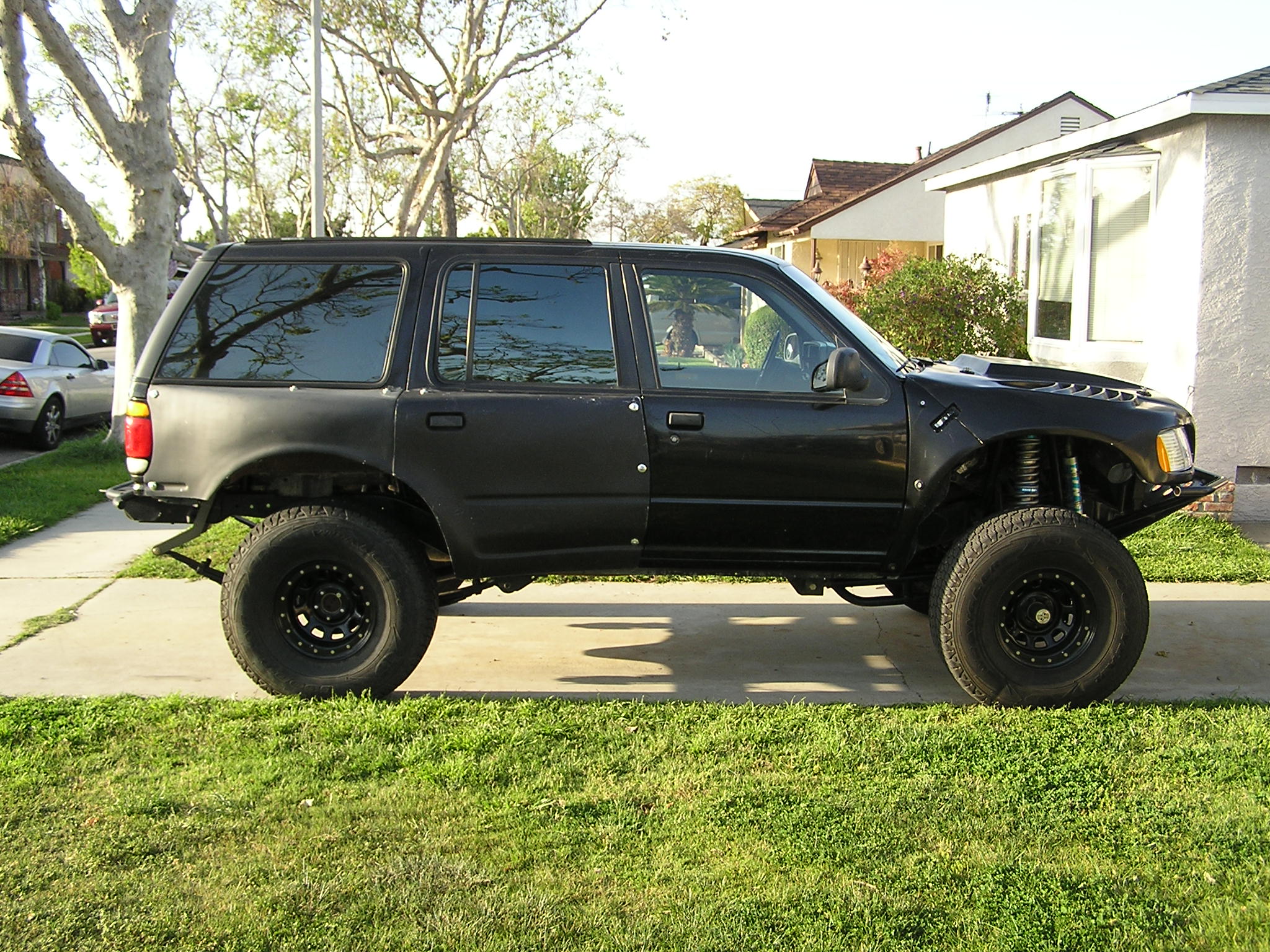
For daily driving, these early Explorers offer a compelling blend of practicality and capability that keeps them relevant decades later. The upright seating position provides excellent visibility a feature increasingly sacrificed in contemporary vehicles.
The interior dimensions, with generous headroom and easily accessible cargo areas, make these vehicles remarkably practical for everyday family use. The four-wheel drive systems, while not as sophisticated as modern offerings, provide a genuine all-weather capability that continues to serve owners in rural areas and harsh climates.
Maintenance remains straightforward thanks to the conventional layout and mechanical simplicity. Parts availability benefits from the Explorer’s tremendous sales success, with aftermarket support remaining robust even decades after production.
The interchangeability of components across multiple model years and related Ford vehicles ensures continued parts supply for the foreseeable future. Many owners report that basic maintenance costs remain lower than for newer, more complex vehicles.
What’s particularly noteworthy about the Explorer’s continued service is how it represents the transition period in American automotive design. These vehicles bridge the gap between traditional truck-based utility vehicles and modern crossovers, offering a unique combination of ruggedness and family-friendly features.
Many current owners specifically seek out these earlier generations for their simpler mechanical systems and more utilitarian character compared to contemporary offerings.
While lacking modern safety features and achieving only modest fuel economy (typically 15-19 mpg), these Explorers continue to provide dependable transportation thanks to their fundamental durability and straightforward design philosophy.
Their continued presence on American roads speaks to Ford’s engineering success during this pivotal period and the enduring appeal of vehicles designed with long-term serviceability in mind.
7. Cadillac Fleetwood (1993-1996)
The 1993-1996 Cadillac Fleetwood remains one of the most impressive American luxury cars ever produced and continues to serve as a daily driver for a dedicated group of enthusiasts nearly three decades after production ceased.
As the last of Cadillac’s traditional full-sized, rear-wheel-drive luxury sedans, the Fleetwood represents the culmination of a design philosophy that defined American luxury motoring for most of the 20th century.
At an imposing 225 inches in length nearly 19 feet the Fleetwood stands as the longest production sedan built in America since the 1970s. This remarkable size translates to an interior volume that modern vehicles simply cannot match.
The rear seat area offers limousine-like legroom of 60.6 inches, while the trunk provides a cavernous 21.7 cubic feet of storage. For owners still using these vehicles daily, this spaciousness represents a practical advantage that transcends mere luxury.
Powering these massive sedans is GM’s legendary LT1 5.7-liter V8 engine, sharing its basic architecture with the contemporary Corvette. Producing 260 horsepower and 330 lb-ft of torque, this robust powerplant provides both adequate performance (0-60 mph in about 8.5 seconds) and exceptional durability, with many examples exceeding 300,000 miles with basic maintenance.
The sturdy 4L60E automatic transmission and traditional body-on-frame construction create a mechanical package designed for decades of service. The Fleetwood’s continued viability as a daily driver stems partly from its remarkable ride quality.

The soft suspension, combined with 15-inch wheels wearing high-profile tires, creates a floating sensation largely absent from modern vehicles with their focus on handling precision over comfort.
The extensive sound insulation and substantial mass (approximately 4,500 pounds) provide exceptional highway refinement, with many owners reporting that long-distance driving comfort remains unmatched by contemporary luxury vehicles.
Maintenance remains straightforward thanks to the conventional layout and extensive parts sharing across GM’s B-body and D-body platforms. Many components are interchangeable with more common Chevrolet and Buick models of the era, ensuring continued parts availability.
The mechanical systems are largely accessible without specialized tools, allowing owners to perform basic maintenance themselves an increasingly rare quality in luxury vehicles.
While fuel economy remains modest (typically 15-17 mpg city, 22-25 mpg highway), many owners find this acceptable given the vehicle’s size and capability.
The combination of space, comfort, and mechanical durability makes these distinctive American luxury cars uniquely qualified for extended service lives. Their continued presence on roads represents not just nostalgia but a practical choice for those valuing traditional American luxury virtues over the technological complexity of modern alternatives.
8. Chevrolet Caprice/Impala SS (1991-1996)
The 1991-1996 Chevrolet Caprice and its high-performance variant, the Impala SS (1994-1996), represent some of the last true American full-size rear-wheel-drive sedans and continue to serve as beloved daily drivers decades after production.
These B-body Chevrolets, particularly the Impala SS, have achieved cult status among enthusiasts while proving remarkably adept at handling the rigors of everyday use well into the 21st century.
The Caprice/Impala SS platform benefited from GM’s extensive investment in its B-body architecture. The perimeter frame design provided exceptional structural rigidity uncommon in modern unibody vehicles, while the four-wheel independent suspension offered a sophisticated blend of comfort and handling that remains impressive decades later.
The Impala SS, developed with input from former Corvette engineer Jon Moss, featured a sport-tuned suspension, larger wheels, and distinctive styling that transformed the formal Caprice into something considerably more aggressive.
Powertrain options play a crucial role in these vehicles’ longevity. The standard Caprice offered the reliable 5.0-liter (305 cubic inch) and 5.7-liter (350 cubic inch) small-block V8 engines, while the Impala SS exclusively featured the LT1 5.7-liter V8 producing 260 horsepower and 330 lb-ft of torque.
These robust pushrod engines, with their iron blocks and relatively modest specific output, were designed with significant mechanical margins that enable them to exceed 200,000 miles with basic maintenance routinely. The bulletproof 4L60E automatic transmission completes a powertrain package engineered for extraordinary service life.
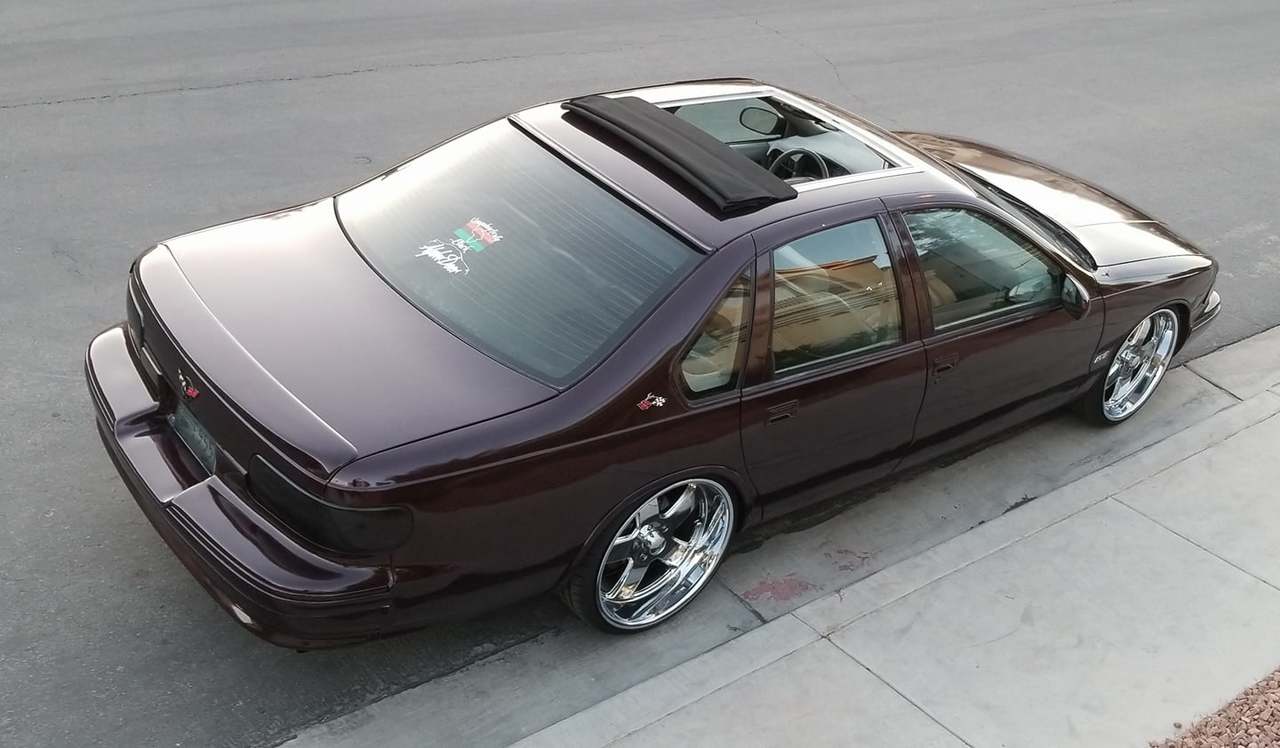
The spacious interior dimensions make these vehicles remarkably practical for daily use. The six-passenger seating capacity (with front and rear bench seats in most Caprice models) and enormous trunk space offer a utility that few modern vehicles can match.
The commanding driving position and excellent visibility through large glass areas make urban navigation surprisingly manageable despite the vehicle’s substantial dimensions.
Maintenance remains straightforward thanks to the conventional layout and mechanical simplicity. Parts availability benefits from extensive component sharing across GM’s B-body platform, which included the Buick Roadmaster and Cadillac Fleetwood.
A vibrant enthusiastic community provides support and expertise for owners maintaining these vehicles, with specialty vendors continuing to produce replacement components and performance upgrades.
Perhaps most remarkably, these large sedans deliver reasonable fuel economy during highway cruising. The combination of the efficient LT1 engine, aerodynamic improvements over previous generations, and tall final drive ratios allow highway consumption in the 24-26 mpg range figures competitive with many smaller modern vehicles.
While lacking contemporary safety features and technology, these distinctive American sedans continue to serve owners who value their combination of space, comfort, durability, and character above the complexities of more modern alternatives.
9. Chevrolet/GMC Suburban (1992-1999)
The 1992-1999 Chevrolet and GMC Suburban represents perhaps the ultimate expression of American automotive utility and continues to serve as a daily driver for families and businesses nearly three decades after production.
As the longest-running nameplate in automotive history (dating back to 1935), the Suburban has always prioritized maximum interior volume and towing capability, but this GMT400-platform generation achieved a breakthrough balance of utility and everyday usability that explains its continued relevance.
At an imposing 219.5 inches long and offering up to nine-passenger seating with 149.5 cubic feet of total cargo volume, these Suburbans provide interior space that few modern vehicles can match.
This exceptional utility made them popular with large families, businesses needing to transport people and cargo and those requiring significant towing capability of up to 10,000 pounds when properly equipped. For many current owners, this combination of passenger capacity and utility simply cannot be replaced by contemporary offerings.
The powertrain lineup contributed significantly to the Suburban’s longevity. The standard 5.7-liter (350 cubic inch) small-block V8 engine, producing 255 horsepower and 330 lb-ft of torque, represents one of GM’s most durable designs.
Its low-stress operation, with modest specific output for its displacement, enables many examples to exceed 300,000 miles with basic maintenance.
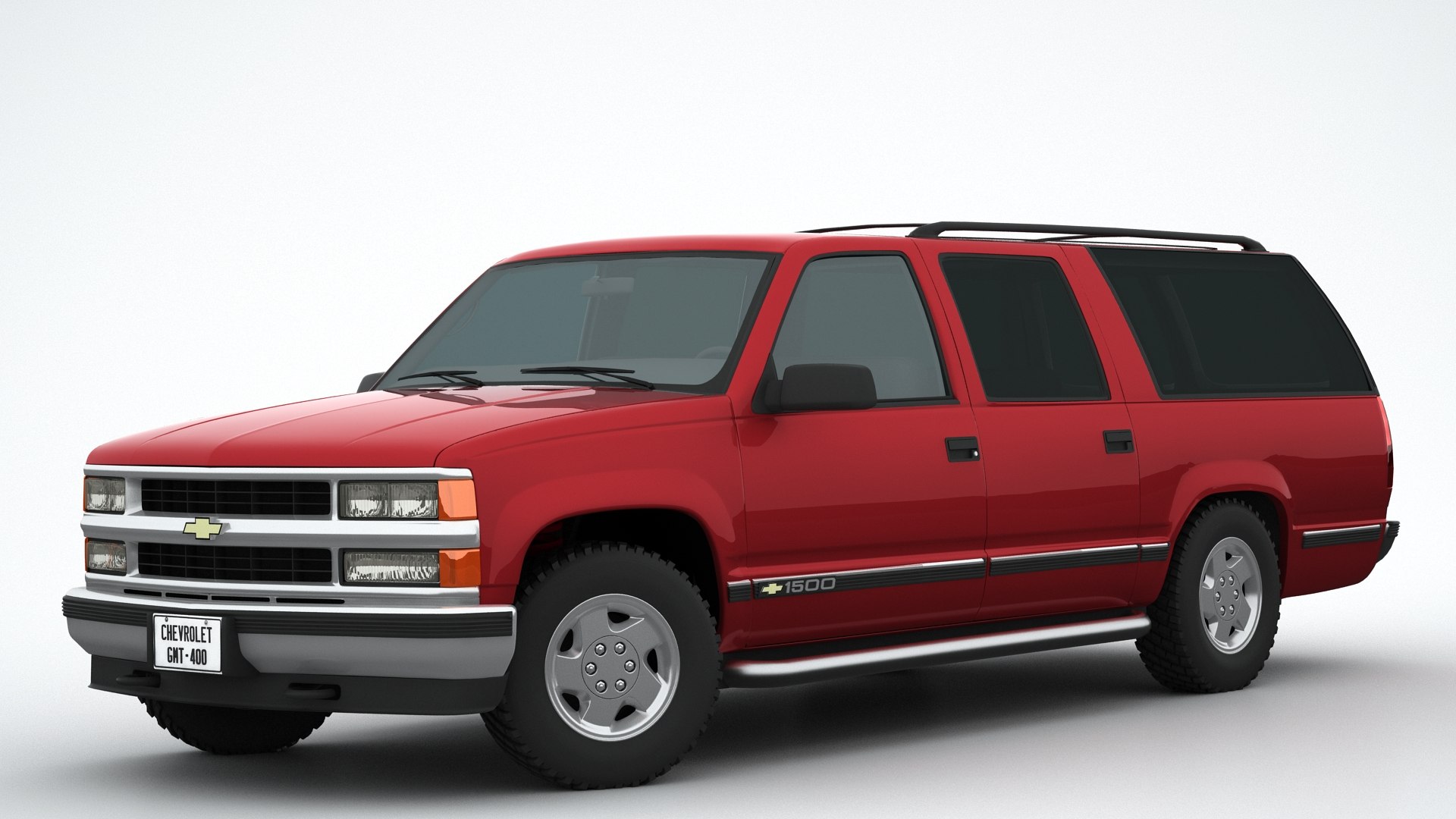
The available 7.4-liter (454 cubic inch) big-block V8, producing 290 horsepower and a substantial 410 lb-ft of torque, offered even greater durability for towing applications. These engines were paired with the sturdy 4L80E heavy-duty automatic transmission in most applications.
For daily use, these Suburbans offer several advantages that keep owners committed despite their age. The commanding driving position and relatively good visibility make them more manageable in traffic than their dimensions might suggest.
The body-on-frame construction provides exceptional durability for rough roads and heavy loads. The spacious front and middle rows offer comfort that rivals luxury vehicles of the era, while the cavernous cargo area handles everything from grocery runs to home improvement materials with ease.
Maintenance remains straightforward thanks to the conventional layout and mechanical simplicity. Parts availability benefits from extensive component sharing across GM’s truck and SUV lineup of the period.
The interchangeability of components across multiple model years and related vehicles ensures continued parts supply for the foreseeable future. Many owners report that basic maintenance costs remain reasonable compared to newer, more complex vehicles.
While fuel economy remains modest (typically 12-16 mpg depending on configuration and driving conditions), many owners consider this an acceptable trade-off for the vehicle’s exceptional utility.
The combination of passenger capacity, cargo volume, towing capability, and mechanical durability makes these distinctive American utility vehicles uniquely qualified for extended service lives well beyond what their designers likely anticipated.
10. Lincoln Town Car (1990-1997)
The second-generation Lincoln Town Car, produced from 1990 through 1997, represents one of the most enduring examples of traditional American luxury and continues to serve as a daily driver for a dedicated group of enthusiasts decades after production.
As the standard-bearer for Lincoln’s “American luxury” philosophy, the Town Car emphasized space, comfort, and isolation above all else qualities that continue to attract owners seeking an alternative to contemporary luxury vehicles.
Built on Ford’s robust Panther platform, the Town Car’s body-on-frame construction provides exceptional durability uncommon in modern unibody vehicles.
This traditional architecture, while heavier than contemporary designs, offers superior longevity and repairability that help explain why these vehicles remain viable for daily drivers decades later.
The separate frame also enables these large sedans to better absorb road imperfections, contributing to their legendary ride quality. Powering the Town Car throughout this generation was Ford’s 4.6-liter modular V8 engine, initially producing 210 horsepower and later uprated to 220 horsepower.
This engine represents one of Ford’s most durable designs, with many examples exceeding 300,000 miles with basic maintenance. Its overhead cam design and relatively modest specific output contribute significantly to its longevity. Paired with the robust AOD-E/4R70W automatic transmission, this powertrain creates a mechanical package designed for extraordinary service life.
The Town Car’s interior dimensions seem almost impossible by contemporary standards. The six-passenger seating capacity with front and rear bench seats provides exceptional space, particularly in the rear compartment, where the 45.4 inches of legroom exceeds that of many modern luxury flagships.
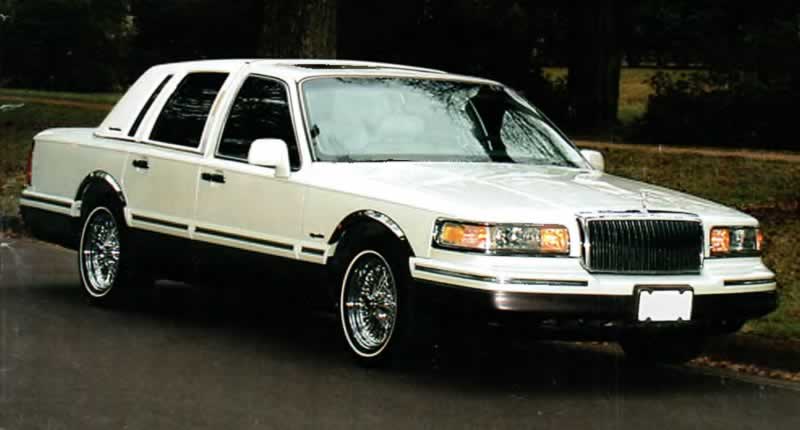
The 22.3 cubic foot trunk remains among the largest ever offered in a sedan. For current owners, this spaciousness represents a practical advantage that transcends mere luxury. For daily driving, the Town Car offers several advantages that keep owners committed despite the vehicle’s age.
The soft suspension and extensive sound insulation create a serene driving experience largely absent from modern vehicles with their focus on handling precision over comfort. The commanding driving position and excellent visibility through large glass areas make urban navigation surprisingly manageable despite the vehicle’s substantial dimensions.
Maintenance remains straightforward thanks to the conventional layout and mechanical simplicity. Parts availability benefits from extensive component sharing across Ford’s Panther platform, which included the ubiquitous Crown Victoria police interceptors.
This ensures continued parts supply for the foreseeable future. Many owners report that basic maintenance costs remain lower than for newer, more complex vehicles.
While lacking modern safety features and technology, the Town Car’s combination of space, comfort, durability, and character continues to attract owners seeking traditional American luxury virtues above the complexities of contemporary alternatives.
11. Dodge Ram 1500 (1994-2001)
The second-generation Dodge Ram 1500, produced from 1994 through 2001, revolutionized pickup truck design and continues to serve as a reliable daily driver for thousands of Americans decades after production.
These distinctive trucks, with their bold “big rig” styling that broke from traditional pickup design language, represented Chrysler’s dramatic comeback in the truck market and established a visual identity that continues to influence modern Ram trucks.
The second-generation Ram’s continued viability as a daily driver stems largely from its robust mechanical underpinnings. The available powertrains, particularly the legendary 5.9-liter Magnum V8 producing 230 horsepower and 330 lb-ft of torque, were engineered with significant mechanical margins, allowing many examples to exceed 250,000 miles with basic maintenance.
The optional 5.2-liter V8 and durable 3.9-liter V6 similarly provide excellent longevity. These engines, with their low-stress operation and oversquare design, were built for durability rather than maximum efficiency, a philosophy that has paid dividends decades later.
The truck’s distinctive styling wasn’t merely cosmetic it enabled a more spacious cabin than competitors offered. The broad shoulders and imposing stance translated to an exceptional interior room, with the Club Cab configuration offering usable rear seating uncommon in extended cabs of the era.
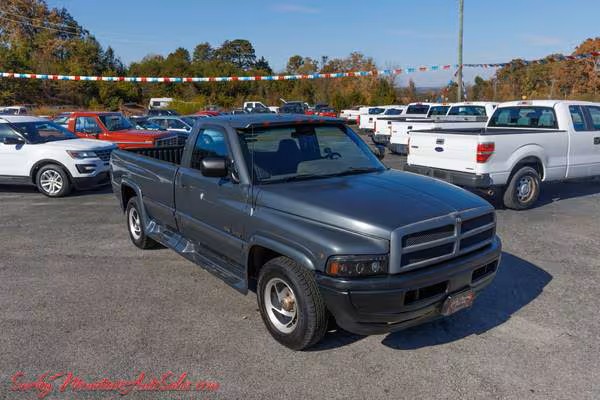
The dashboard design placed controls within easy reach, while the ergonomics reflected careful human-factors engineering. For many current owners, this combination of distinctive style and daily usability keeps these trucks relevant decades after purchase.
For work applications, the Ram offered several innovations that helped ensure its continued utility. The available 8-foot bed provided genuine capability for hauling building materials and other large cargo.
The sturdy frame and substantial towing capacity of up to 8,000 pounds when properly equipped ensured these trucks could handle serious work duties. Many examples continue to serve in commercial applications, a testament to their fundamental durability.
Maintenance remains straightforward thanks to the conventional layout and mechanical simplicity. The engine bay offers excellent access for routine service, while the body-on-frame construction simplifies many repairs.
Parts availability benefits from the Ram’s tremendous sales success, with aftermarket support remaining robust even decades after production. The interchangeability of components across multiple model years ensures continued parts supply for the foreseeable future.
While lacking modern safety features and achieving only modest fuel economy (typically 12-17 mpg depending on configuration), these distinctive trucks continue to provide dependable transportation thanks to their fundamental durability and straightforward design philosophy.
Their continued presence on American roads speaks to Chrysler’s engineering success during this pivotal period and the enduring appeal of vehicles designed with character and longevity as primary considerations.
12. Saturn S-Series (1991-2002)
The Saturn S-Series, produced from 1991 through 2002, represents one of General Motors’ most innovative attempts at reinventing American compact cars and continues to serve as an economical daily driver for a dedicated group of owners.
Created under GM’s “different kind of car company” philosophy, these humble compact sedans, coupes, and wagons were designed with durability and efficiency as primary considerations, qualities that help explain their continued presence on American roads decades after production.
Central to the S-Series’ remarkable longevity is its unique powertrain. All models featured Saturn’s exclusive “lost foam cast” aluminum 1.9-liter four-cylinder engine, available in both single overhead cam (100-100 horsepower) and dual overhead cam (124-126 horsepower) configurations.
These engines incorporated several durability-focused innovations, including a cast iron cylinder liner and a timing chain rather than a belt. When properly maintained, these powerplants routinely exceed 200,000 miles before requiring major service.
The manual transmissions, in particular, demonstrate exceptional durability, with many original units still functioning after decades of use. Perhaps the S-Series’ most innovative feature was its polymer body panel system.
These dent-resistant thermoplastic panels, mounted on a steel space frame, provided several long-term advantages. Unlike conventional sheet metal, they resist corrosion entirely, allowing many examples to maintain their appearance decades later, even in harsh northern climates.
Minor collisions that would damage traditional bodies often leave these panels unscathed. When replacement is necessary, individual panels can be swapped without extensive bodywork—a significant advantage for long-term maintenance.
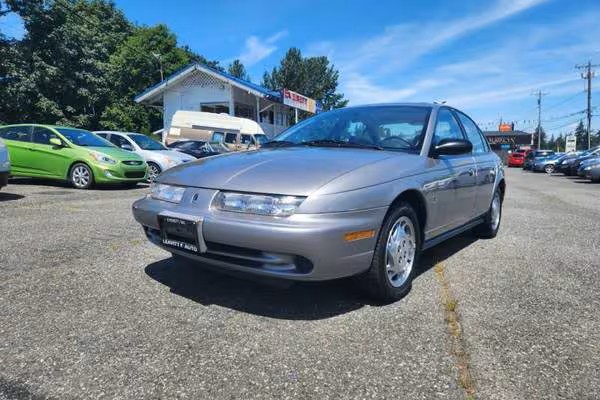
For daily driving, the S-Series offers several practical advantages that keep owners committed. The compact exterior dimensions (approximately 176 inches long) make these vehicles easy to maneuver and park in urban environments.
Despite this modest footprint, the interior provides reasonable space for four adults, while the wagon variant (introduced in 1993) offers substantial cargo capacity. Most importantly, fuel economy remains exceptional even by modern standards, with many owners reporting 35-40 mpg in highway driving.
Maintenance remains straightforward thanks to the conventional front-wheel-drive layout and accessibility of major components. A vibrant owner community provides support and expertise for those maintaining these vehicles, with specialty vendors continuing to produce replacement components.
The interchangeability of parts across the S-Series’ entire production run creates an enormous pool of potential replacement components. While lacking modern safety features and amenities, the S-Series’ fundamental qualities of fuel efficiency, mechanical simplicity, and corrosion resistance make them uniquely qualified for extended service lives.
Their continued presence on American roads represents not just nostalgia but a practical choice for those seeking economical transportation with proven durability. As contemporary vehicles grow increasingly complex and expensive, these humble Saturns demonstrate the enduring value of cars designed with longevity as a primary consideration.

